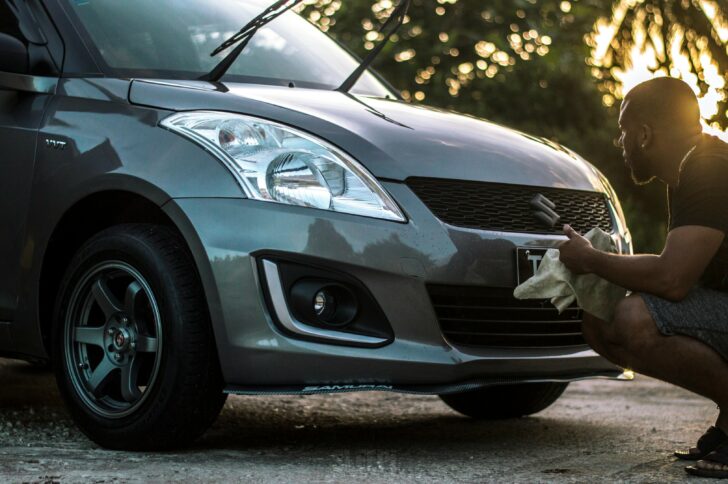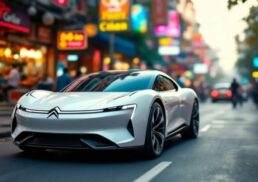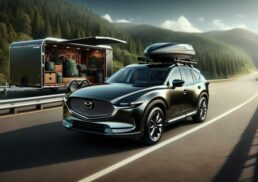Searching for Suzuki cars brings to mind questions of their reliability, current models, and company direction. This article cuts through the clutter to address Suzuki’s global standing, brief U.S. market history, and its progressive strides into electrification and sustainability—with no sales pitch, just facts for your consideration.
Table of Contents
Key Takeaways
Suzuki has a legacy of innovation in the compact and kei car segments, with a strong presence in global markets despite exiting the U.S. in 2012 due to competitive and logistical challenges.
The brand’s current lineup caters to diverse consumer needs with a variety of models, including kei cars, sedans, hatchbacks, SUVs, and crossovers recognized for their reliability and efficiency.
Suzuki is proactively adapting to the electric and hybrid revolution with plans to electrify its lineup, showcase futuristic prototypes, and achieve carbon neutrality at its domestic plants by 2035.
Exploring the Suzuki Legacy: A History of Innovation

Suzuki’s transition from the silk industry’s looms to the bustling streets, manufacturing lightweight motorcycles and cars, depicts a tale of adaptation and foresight. Kei cars, epitomized by their diminutive stature and fuel thriftiness, are where Suzuki truly solidified its niche, much like Honda in the automotive industry.
The Swift and Alto are not just vehicles; they are the brand’s ambassadors, heralding Suzuki’s commitment to reliability and efficiency on a global scale.
The Rise of Suzuki in Japan
When the Suzulight debuted in 1955, it heralded the dawn of Japan’s minivehicle market. With the debut of Suzulight, Suzuki’s inaugural automobile, a symbol of creativity was born. It paved the way for a legacy of excellent cars, perfectly suited to Japan’s narrow alleys and bustling cities.
Suzuki’s Global Ventures
In 1963, Suzuki expanded its horizons beyond Japan, establishing its first overseas subsidiary in Los Angeles. Strategic alliances, such as the notable joint ventures with Maruti Udyog Ltd. in India and a partnership with General Motors, bolstered Suzuki’s global reach and manufacturing prowess.
The Departure from the U.S. Market
However, Suzuki’s journey in the U.S. witnessed an unforeseen turn, leading towards an unexpected closure. Faced with fierce competition and logistical hurdles, Suzuki’s U.S. subsidiary eventually succumbed to bankruptcy in 2012, halting the influx of new Suzuki cars like the Grand Vitara and Samurai to American shores.
Suzuki’s Current Lineup Around the World
Currently, Suzuki’s array of products mirrors the vibrancy and diversity of the markets it caters to. From the sprightly Alto K10 to the robust Vitara, Suzuki automobiles continue to cater to a wide array of tastes and needs across continents.
Kei Cars and Compact Wonders
Exemplified by the Alto and Wagon R, Suzuki’s kei cars and compact vehicles stand as models of urban mobility, contributing to fewer cars on the road. Their compact dimensions and efficient use of space make these small cars very good cars in crowded cityscapes, similar to what Toyota offers in their lineup.
The Alto Works, in particular, emerges as a beloved icon, its high-performance engine and lightweight frame delivering a spirited driving experience that resonates with car enthusiasts and club racers alike.
Suzuki SUVs and Crossovers

In the realm of SUVs and crossovers, Suzuki showcases its prowess with versatile models like the Jimny, Vitara, and the Suzuki Equator, known for their dual capability of urban utility and off-road performance. The S-Cross, now boasting all-wheel drive and enhanced safety features, is a testament to Suzuki’s dedication to evolving its vehicles with the times.
Suzuki Sedans and Hatchbacks
Models like the Swift and Dzire, under the category of sedans and hatchbacks, remain popular among city dwellers due to their compactness, fuel efficiency, and agile handling. Reports laud these vehicles, especially the Vitara, for their reliability, proving that Suzuki vehicles are built to last even as the years roll on.
The Second-Hand Suzuki Scene
Exploring the pre-owned market reveals a wide array of Suzuki models available through diverse channels. Online marketplaces, local dealerships, and certified pre-owned programs offer an array of options for those seeking the Suzuki charm at a more accessible price point.
Where to Find Used Suzuki Models
Platforms such as Cars.com provide access to a variety of used Suzuki automobiles, offering search tools that enable buyers to filter based on price, model, and body style. Whether it’s a budget-conscious purchase under $5,000 or a premium selection, the second-hand Suzuki scene is replete with options to match any preference.
Assessing Quality and Reliability
To accurately assess the quality and reliability of a pre-owned Suzuki, prospective buyers should examine the vehicle’s maintenance records and safety ratings. Such diligence is key to uncovering potential issues and ensuring that the vehicle’s storied reliability is not merely a matter of perception.
Suzuki’s Innovations and Future Plans
With the evolving automotive landscape, Suzuki remains proactive, refusing to rest on its laurels. The brand is embracing the electric revolution with plans to electrify its lineup and achieve ambitious sustainability goals.
Embracing Electric and Hybrid Technologies
Suzuki’s roadmap for electric and hybrid vehicles is clear-cut, with a dedicated commitment to launching new models in Japan and Europe, promising to carry forward its legacy into an electrified future.
Maruti Suzuki’s unveiling of electric prototypes and its broad range of forthcoming EVs demonstrate a stride towards meeting the evolving demands of consumers worldwide.
Suzuki’s Concept Cars and Prototypes
Concept cars, such as the eVX, are indicators of innovation, providing previews of the future Suzuki automobiles that might grace global roads someday. These prototypes not only captivate with their futuristic designs but also signal Suzuki’s steadfast commitment to remaining at the forefront of automotive technology.
The Road Ahead for Suzuki
Maruti Suzuki envisions a bright future where electric vehicles dominate its sales, supplemented by hybrids and alternative fuel vehicles, all contributing to better fuel economy.
Meanwhile, Suzuki’s pledge to achieve carbon neutrality at its domestic plants by 2035 showcases its dedication to a greener, more sustainable automotive future.
Check out Suzuki Announces Growth Strategy for FY2030.
Summary
From its humble beginnings to its current stature as a global player, Suzuki has demonstrated resilience and innovation. Its diverse lineup stays true to the brand’s values of reliability and efficiency, while the second-hand market offers a testament to the lasting appeal of Suzuki vehicles. With an eye towards sustainability and electrification, Suzuki is gearing up for a future that promises to be as dynamic as its storied past.
Frequently Asked Questions
What was Suzuki’s first automobile and how did it impact the Japanese market?
Suzuki’s first automobile was the Suzulight, introduced in 1955, and it played a significant role in establishing Japan’s minivehicle market, setting the stage for the brand’s success in producing very good cars.
Can I still find new Suzuki models in the United States?
No, you cannot find new Suzuki models in the United States, but you can still find them in the second-hand market.
What are some of Suzuki’s most popular models today?
Suzuki’s most popular models today include the Alto K10, Baleno, Swift, Ciaz, Jimny, and Vitara, catering to various market preferences and segments.
Is Suzuki working on electric vehicles?
Yes, Suzuki is planning to launch several new electric vehicle models in Japan and Europe by 2030, with Maruti Suzuki also introducing electric vehicles by 2031.
What is Suzuki’s commitment to sustainability?
Suzuki is committed to achieving carbon neutrality at its domestic plants by 2035, including significant CO2 emissions reductions and the introduction of electric and hybrid vehicles.









